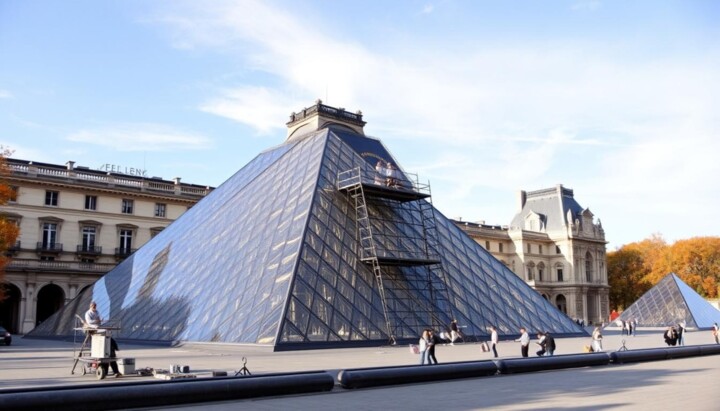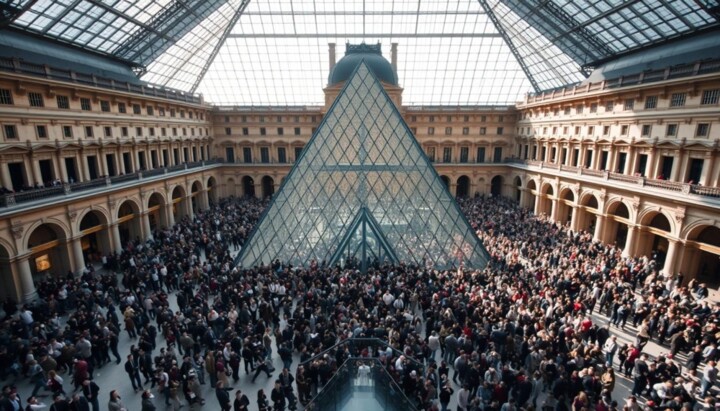Key Points
- The Louvre welcomed 8.7 million visitors last year, exceeding its planned capacity of 4 million visitors per year.
- The museum is in urgent need of restoration and renovation to cope with its aging infrastructure and high overtourism .
- Renovation costs are estimated at 500 million euros ($520 million) to restore and renovate the Louvre's exhibition halls.
- The Louvre building, originally a 12th-century fortress, has deteriorated, with parts described as “very degraded” and “no longer watertight”.
- Director Laurence des Cars highlighted the “worrying temperature variations” that threaten the conservation of artworks , pointing to challenges in the Louvre’s environmental control systems.
The Louvre, the world's most visited museum, is facing a major crisis. Overcrowding, structural problems and a lack of funding threaten its ability to preserve its precious collections and offer an enjoyable visitor experience.
Overpopulation and Structural Pressures
In 2018, the Louvre welcomed a record 10.2 million visitors. While this is an impressive number, it far exceeds the museum’s designed capacity. Originally designed to accommodate 4 million visitors per year, the iconic Pyramid entrance now sees over 8.7 million people each year. This overcrowding leads to long lines, crowded spaces, and a degraded visitor experience.
This excessive attendance also puts a strain on the building's infrastructure. Water leaks, temperature fluctuations and insufficient equipment threaten the conservation of works of art, including masterpieces such as the Mona Lisa .
Renovation and Financing Challenges
Laurence des Cars, the Louvre’s president, has introduced measures to reduce overcrowding, such as limiting the number of visitors to 30,000 per day. However, these initiatives are not enough to solve the fundamental problems. The museum needs a major renovation, estimated at €500 million. The ambitious project includes the construction of a new wing for the Mona Lisa and a new entrance to ease congestion. Currently, 15% of the exhibitions are closed for renovations, further reducing the space available for visitors.
However, funding remains a major obstacle. The French government's budgetary constraints have delayed financial support, putting the museum in a delicate situation. Discussions between Emmanuel Macron's presidency, the Ministry of Culture and the Louvre's management are underway to find solutions. 
A Priority Preservation
Originally a 12th-century fortress that became a national museum in 1793, the Louvre is a historical and cultural symbol of France. Preserving its future is essential, not only for the country, but also for the global cultural community. Experts recommend stricter limits on visitor numbers and better crowd management, which could improve the visitor experience by 40% while increasing revenue from tickets and merchandise sales.



 Jean Dubreil
Jean Dubreil